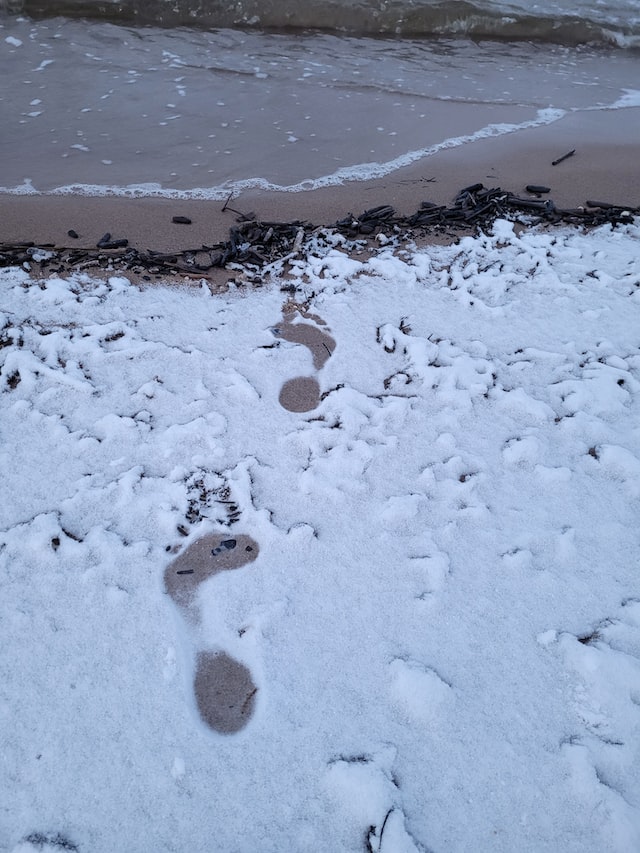Cold weather is any temperature below the freezing point of water (32°F or 0°C). Cold weather affects people in various ways, from physical to emotional health. People can be susceptible to cold-weather-related illnesses like hypothermia, frostbite, and colds. Cold weather can also cause emotional distress and challenge mental health, leading to depression and anxiety. We describe in this article the health benefits of cold therapy.
Cold weather can create many problems for the body, from difficulty breathing to dehydration. In cold weather, air contains less moisture, making it harder for the lungs to absorb oxygen, which can cause trouble breathing. Cold weather also causes the body to lose more heat than in warmer weather, leading to dehydration and fatigue.
It is essential to take steps to protect and prepare for cold weather. It can include wearing layers of clothing, drinking warm fluids, avoiding going outside for extended periods, and avoiding alcohol, caffeine, and sugary drinks. It is also essential to check for signs of hypothermia, frostbite, and other cold-weather-related illnesses.
Contents
Overview of Cold Therapy
Cold therapy, also known as cryotherapy, is a form of physical therapy that involves using cold temperatures to treat various medical conditions. Cold therapy has been used for centuries to reduce inflammation, reduce pain, and promote healing. Cold therapy can be applied using ice packs, compresses, gels, sprays, cold water immersion, and cryosurgery. The effects of cold therapy are often short-term but can provide relief from symptoms for some time. In addition to its therapeutic benefits, cold therapy can also be used for cosmetic purposes, such as reducing wrinkles and cellulite.
Benefits of Cold Therapy
Cold therapy has many potential benefits for both short-term and long-term healing. These include:
- Reducing inflammation and swelling
- Increasing blood flow
- Reducing muscle spasms
- Relieving pain
- Increasing range of motion
- Promoting relaxation
- Improving healing times
- Increasing tissue recovery
- Improving joint health
- Reducing the risk of injury
- Increasing flexibility and mobility
Improved Circulation
Cold therapy can be used to improve circulation. Cruel treatment involves applying cold temperatures to the skin to reduce inflammation, reduce pain and promote healing. Cold therapy can reduce swelling and muscle spasms and improve circulation. It can also reduce inflammation and pain associated with arthritis, tendonitis, bursitis, and other conditions. Cold temperatures cause the blood vessels to constrict, which helps to reduce inflammation and can help improve circulation. Cold therapy should be done for short periods, usually 15-20 minutes at a time, and not on bare skin. A mean or ice pack should be used to provide cold therapy.
Reduced Inflammation
Cold therapy involves the application of freezing temperatures, either through ice packs, cold water baths, or cryotherapy, to reduce inflammation and pain in the body. Cold therapy works by slowing down the metabolism of cells, reducing inflammation and swelling, and numbing the affected area to reduce pain and discomfort. It is often used to treat sports injuries, sprains, and strains and for post-surgery recovery.
Cold therapy can also reduce inflammation and pain associated with chronic health conditions, such as arthritis and fibromyalgia. Cold temperatures slow down the activity of the immune system, reducing the release of inflammatory molecules and reducing pain. Cold therapy can be used as a natural remedy for reducing inflammation. It can be used with other treatments, such as physical therapy and medications, to provide maximum relief.
One of the benefits of cold therapy is that it is a non-invasive and natural treatment option with few side effects. Cold therapy is also very convenient, as it can be done at home with simple items like cold packs or ice baths. However, it is essential to be careful with cold therapy, as overly cold temperatures can cause tissue damage and increase inflammation.
Overall, cold therapy can be an effective way to reduce inflammation and pain in the body. It is safe, convenient, and affordable and can be used to treat a variety of conditions.
Muscle Relaxation
Yes, cold therapy is often used to relax muscles. Cold therapy can reduce muscle inflammation, decrease muscle tension, and improve muscle relaxation. Cold compresses and ice packs are two common forms of cold therapy used to relax muscles.
Improved Mood
Cold therapy can be used to improve mood by providing a physical reminder that can be used to focus on something other than negative thoughts. Cold therapy has been used to help reduce stress, anxiety, and depression and improve concentration, focus, and energy levels. Cold showers or baths can help improve circulation, reduce inflammation, and enhance sleep quality.
Cold therapy can also help to increase alertness and reduce fatigue. Cold therapy can help people become more aware of their surroundings and be more productive during the day by stimulating the brain and body. Cold therapy can also help to reduce mental fatigue and improve cognitive function. Lastly, cold therapy can help to boost energy levels, reduce muscle tension, and help with relaxation.
Cold therapy is a great way to improve mood and overall well-being. It can help to reduce stress, anxiety, and depression, as well as to improve concentration, focus, and energy levels. Additionally, it can help to increase alertness, reduce fatigue, and improve cognitive function. By using cold therapy, people can become more aware of their surroundings and become more productive during the day.
Reduced Stress
Reducing stress can be achieved through various methods, including cold therapy. Cold therapy involves exposure to cold temperatures, such as taking a cold shower, bathing in an ice bath, or applying an ice pack to the affected area. It can help to reduce stress by releasing endorphins and providing a calming sensation. Additionally, cold therapy helps to reduce inflammation, reduce muscle tension, and improve blood circulation.
Other stress-reducing methods include meditation, deep breathing, exercise, and spending time in nature. Additionally, engaging in activities that bring joy, maintaining a healthy diet, and getting enough sleep can help reduce stress levels.
It is important to note that cold therapy should not be used for prolonged periods. It is essential to consult a physician before undertaking any new treatment.
Increased Energy
Cold therapy can increase energy levels in a few ways. First, it can act as a stimulant, as it can cause the body to shiver, stimulating the release of adrenaline and other hormones that can give an energy boost. Additionally, cold therapy can help reduce inflammation and improve circulation, which can also help increase energy levels.
Lastly, cold therapy can help to improve sleep quality, as it helps to regulate the body’s temperature and can help to reduce stress and anxiety, both of which can lead to more restful sleep. Improved sleep can help to recharge the body and lead to more energy during the day.
Overall, cold therapy can be a great way to boost energy levels and improve overall health.
Tips for Safe
- Apply cold therapy only when necessary. Cold therapy can reduce inflammation and pain, but it should only be used when necessary.
- Follow the instructions of your doctor or physical therapist. They can best advise you on how long and how frequently to apply cold therapy.
- Use the right kind of cold therapy. There are several types of cold therapy, including ice packs, gel packs, and cold compresses. Choose the one that best suits your needs and follow the instructions.
- Take breaks in between cold therapies. Cold therapy can cause discomfort, so taking breaks between applications is essential.
- Wrap the cold source in a cloth. To avoid burns, wrap the hard head in a cloth or towel before applying it to the skin.
- Avoid direct contact with bare skin. Do not apply cold therapy directly to the skin. Instead, a cloth provides a barrier between the cold source and the skin.
- Monitor the area for signs of frostbite. If you notice any symptoms of frostbite, such as numbness, tingling, or discoloration of the skin, stop the cold therapy and seek medical attention.
- Reapply the cold source as needed. Depending on the cold therapy you use, it may need to be reapplied periodically to remain effective.
- Discontinue cold therapy if it doesn’t help. If cold therapy doesn’t help, discontinue its use and talk to your doctor or physical therapist about other treatment options.
- Consult with a doctor if you have any medical conditions. If you have any medical conditions, it is essential to consult with your doctor before using cold therapy.

Top 10 Cold Therapy center
- CryoNation – https://cryonation.com/
- Cryo Centers of America – https://cryocentersofamerica.com/
- CryoLife – https://cryolife.com/
- Cryo Care Centers – https://cryocarecenters.com/
- Cryo Cure – https://cryocure.com/
- Cryo Spa – https://cryospa.net/
- CryoWorks – https://cryoworks.com/
- Cryo Wellness – https://cryowellness.com/
- Cryotherapy USA – https://www.cryotherapyusa.com/
- CryoMax – https://cryomax.co/
Conclusion
Cold therapy is an effective and safe treatment for many conditions and can provide pain relief with minimal side effects. While it is not recommended as a primary treatment for all states, it can be a great supplement to other therapies. It is essential to ensure that is used safely and monitored closely. When appropriately used, it can provide significant relief and add to any treatment plan.





